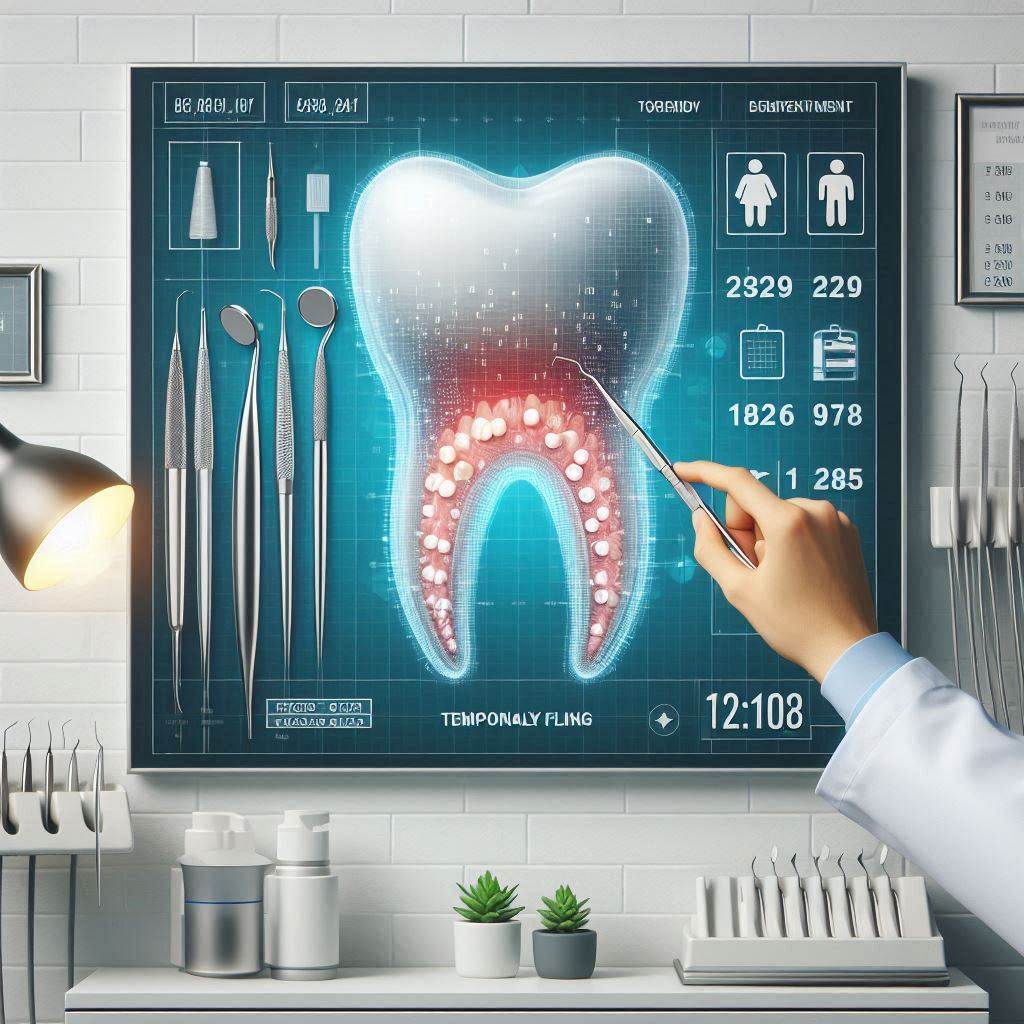Dental Codes for Temporary Fillings
Temporary fillings are a crucial yet often overlooked aspect of dental care. They serve as a short-term solution for various dental issues, providing relief and protection until a permanent restoration can be placed. However, understanding the dental codes associated with temporary fillings is equally important for dental professionals, insurance companies, and patients alike. This article delves deep into the world of dental codes for temporary fillings, offering a comprehensive guide that covers everything from their purpose and materials to coding practices and insurance considerations. Whether you’re a dental professional, a student, or a curious patient, this article will provide you with valuable insights into this essential dental procedure.

2. Understanding Dental Codes: An Overview
Dental codes, also known as Current Dental Terminology (CDT) codes, are standardized codes used to describe dental procedures. These codes are essential for billing, insurance claims, and maintaining accurate patient records. The American Dental Association (ADA) updates the CDT codes annually to reflect advancements in dental practices and technologies.
Temporary fillings fall under the category of restorative dentistry, and their corresponding codes are used to document and bill for these procedures. Understanding these codes is critical for ensuring accurate communication between dental offices and insurance providers.
3. What Are Temporary Fillings?
Temporary fillings are short-term restorations used to protect a tooth until a permanent filling or other restorative treatment can be completed. They are typically made from materials that are easy to apply and remove, such as zinc oxide-eugenol or glass ionomer cement. Temporary fillings are commonly used in the following situations:
- After a root canal treatment
- To relieve pain from tooth decay
- As a placeholder for a permanent crown or filling
- To protect a tooth while waiting for laboratory-fabricated restorations
4. Importance of Temporary Fillings in Dentistry
Temporary fillings play a vital role in maintaining oral health and patient comfort. They provide a barrier against bacteria, reduce sensitivity, and prevent further damage to the tooth structure. Additionally, they allow dentists to assess the tooth’s condition before proceeding with permanent restorations.
5. Common Dental Codes for Temporary Fillings
The following table outlines the most commonly used CDT codes for temporary fillings:
| CDT Code | Description |
|---|---|
| D2940 | Temporary filling |
| D2941 | Interim therapeutic restoration – primary tooth |
| D2949 | Restorative foundation for an indirect restoration |
These codes are used to document and bill for temporary fillings, ensuring clarity and consistency in dental records.
6. How Dental Codes Are Used in Practice
Dental codes streamline the billing and insurance process by providing a standardized way to describe procedures. When a dentist places a temporary filling, they document the procedure using the appropriate CDT code. This code is then included in the patient’s record and submitted to the insurance company for reimbursement.
7. Differences Between Temporary and Permanent Fillings
While both temporary and permanent fillings aim to restore tooth function and structure, they differ in terms of materials, longevity, and purpose. Temporary fillings are designed to last for a few weeks to months, whereas permanent fillings are intended to last for years. Permanent fillings are made from durable materials like composite resin or amalgam, while temporary fillings use softer, more easily removable materials.
8. Materials Used in Temporary Fillings
The choice of material for a temporary filling depends on the specific clinical situation. Common materials include:
- Zinc Oxide-Eugenol: Known for its soothing properties and ease of removal.
- Glass Ionomer Cement: Provides fluoride release and bonds well to tooth structure.
- Composite Resin: Used for longer-lasting temporary restorations.
9. Step-by-Step Procedure for Placing a Temporary Filling
- Preparation: Clean and dry the tooth.
- Material Application: Apply the chosen temporary filling material.
- Shaping: Shape the material to match the tooth’s contours.
- Curing: Allow the material to set or cure.
- Polishing: Smooth the surface for comfort.
10. When Are Temporary Fillings Necessary?
Temporary fillings are necessary in various scenarios, including:
- After root canal therapy
- While waiting for a permanent crown
- To manage tooth decay in children
- As a diagnostic tool to assess tooth sensitivity
11. Risks and Limitations of Temporary Fillings
While temporary fillings are generally safe, they come with certain risks, such as:
- Dislodgement or fracture
- Bacterial leakage
- Allergic reactions to materials
12. Coding Challenges and Common Mistakes
Dental professionals often face challenges when coding for temporary fillings, such as selecting the wrong code or failing to document the procedure adequately. Common mistakes include:
- Using D2940 for interim therapeutic restorations
- Failing to specify the tooth number and surface
13. Insurance and Billing Considerations
Insurance coverage for temporary fillings varies depending on the policy and the reason for the procedure. It’s essential to verify coverage and obtain pre-authorization when necessary. Proper documentation and accurate coding are critical for successful claims.
14. Frequently Asked Questions (FAQs)
Q1: How long does a temporary filling last?
A: Temporary fillings typically last from a few weeks to a few months, depending on the material and the patient’s oral habits.
Q2: Can I eat with a temporary filling?
A: Yes, but avoid hard or sticky foods that could dislodge the filling.
Q3: Is a temporary filling painful?
A: The procedure is usually painless, but some sensitivity may occur afterward.
15. Conclusion
Temporary fillings are an essential part of dental care, providing short-term solutions for various dental issues. Understanding the associated dental codes, materials, and procedures is crucial for dental professionals and patients alike. By following best practices in coding and documentation, dental offices can ensure accurate billing and optimal patient care.


